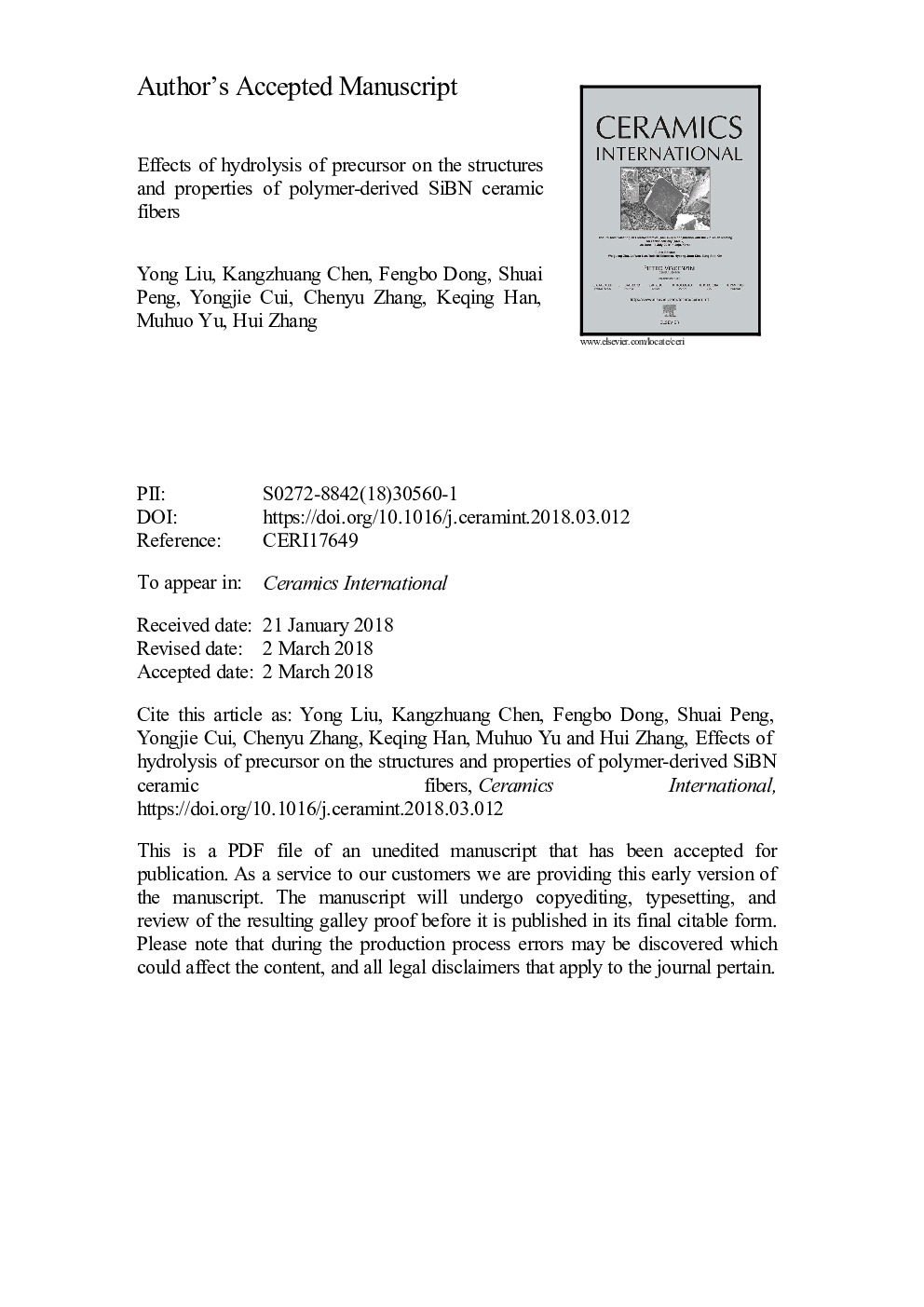| Article ID | Journal | Published Year | Pages | File Type |
|---|---|---|---|---|
| 7886949 | Ceramics International | 2018 | 20 Pages |
Abstract
In this paper, polyborosilazane precursor was synthesied from HMDZ, HSiCl3, BCl3 and CH3NH2 using a multistep method. By controlling the storage conditions, parts of the polyborosilazane fibers were hydrolyzed. FT-IR, NMR, XRD, TEM and monofilament tensile strength test were employed to study the effects of hydrolysis of precursor on the structures and properties of polymer-derived SiBN ceramic fibers. FT-IR and NMR results indicate that Si-N group in PBSZ reacts with H2O to form Si-O-Si group. After pyrolysis reaction at 1400â, Si-O-Si group will finally transformed into highly ordered cristobalite and β-quartz, resulting in formation of the wrinkled surface of the obtained SiBN ceramic fiber. The strip-like defects on fiber surface, according to monofilament tensile strength test, had a significant effect on mechanical property of the obtained SiBN ceramic fiber and caused no increase in fiber tensile strength of hydrolytic polyborosilazane fiber before and after pyrolytic process.
Related Topics
Physical Sciences and Engineering
Materials Science
Ceramics and Composites
Authors
Yong Liu, Kangzhuang Chen, Fengbo Dong, Shuai Peng, Yongjie Cui, Chenyu Zhang, Keqing Han, Muhuo Yu, Hui Zhang,
